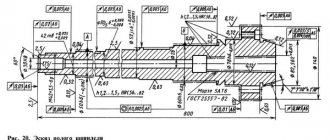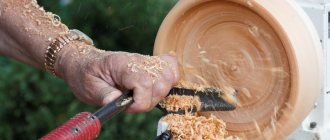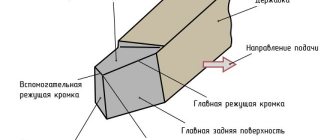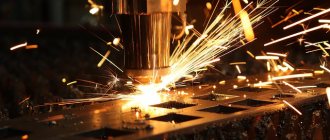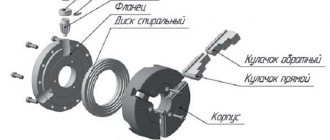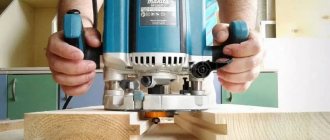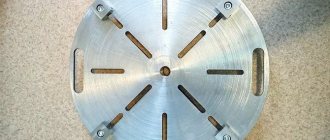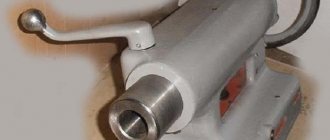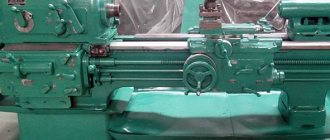05.06.2020
The machine allows you to process parts for a wide variety of purposes. Modern universal models have many parameters, with the help of which work with products is carried out without difficulties. But this tool also has a vulnerable aspect - interaction with objects of inappropriate shape. A lathe chuck faceplate is an easy solution in situations like this.
Large products do not fit into the machine itself, so it is impossible to secure them in the required position. As for non-standard shapes, usually the clamping device, which acts as a fastening element, damages them. Squeezing is not very good for flat materials, the edges may crack or bend. It is especially unpleasant when various fittings are located in these places. And the object itself is quite capable of being damaged in such a situation. Accordingly, it is strictly not recommended to start processing without a specialized adapter.
Specifications
The design of the faceplate is suitable for machines not only of wood, but also of metal. It is presented in the form of a disk with workpiece assemblies made on it. The materials can be either cast iron or steel. Other materials are used in rare cases.
Tapered hubs and threaded holes serve as a tool for attaching the tooling to the spindle. Specific parameters are selected for certain dimensions of the output end of the shaft. Provided that the fixture, which is clamped directly into the machine chuck, is provided with a cylindrical hub.
The workpiece is secured using clamps, crutches, various clamps and other clamping devices. For this purpose, a lathe chuck is installed and used. It can be assembled on a faceplate either along the axis or with its offset. It is worth paying special attention to the faceplate when using production safety precautions.
Large dimensions, non-standard fastenings and non-cylindrical shape of surfaces pose a serious danger both to the turner himself and to others. At the beginning of work, it is necessary to balance and secure all the elements so that the structure does not fluff up and individual components do not fly apart.
Design
It makes no difference which machine is used: metal or wood. This device for securing objects is suitable in both situations. The most common discs are made of steel and cast iron. Grooves and recesses are made on them. The main goal is reliable fixation of the object. Depending on which grooves are located on the surface, there is a certain list of shapes with which a given fastener is allowed to interact.
In addition, the equipment itself is often connected to the spindle using hubs. But the models that are mounted on the cartridge are easy to distinguish. The hubs do not look like cones, they are strict cylinders.
In many variations, the size of the faceplate allows you to install additional clamps on it. Usually clamp type. Then the future product is clamped according to the principle of a vice if it has protruding parts that ignore the mechanical compression pressure.
Do not forget that atypical processing is always a certain risk. The manufacturer did not intend such an action, which means there is a possibility of destruction of the product upon startup. And also the scattering of fragments over a large area. Accordingly, the main weapon in this case is a thorough balance check, calculation, and test run. Theoretically, a danger also arises for the equipment; it can be damaged if the fasteners are set inaccurately.
Attention and caution are the main rules that must be followed.
Can I do it myself?
With basic equipment and some lathe and engineer skills, home fabrication is possible. But the question remains about the necessity of such actions. After all, only the simplest variations can be made at home, and they are not difficult to find on sale, and they are cheap. But the economic feasibility of homemade equipment remains unproven.
Sometimes you need complex designs that cannot be found in stores. But usually their design is very complex, and manufacturing will take a lot of time.
However, if you decide to make it yourself, we will give some recommendations and show you how to do it.
Installation and use rules
On screw-cutting lathes, faceplates are installed on the headstock spindle. And in rotary lathes, the faceplates are part of large rotary tables.
On universal lathes
Jaw chucks are considered universal, as they have a large number of varieties and jaws, but despite this, not all parts can be simply fixed in the chuck. Such parts can be levers, connecting rods, etc., which are not symmetrical. It is for such parts that faceplates are used.
Parts are usually fixed using bolts or cams. Uneven parts are secured with a clamp in the center. If the part needs to be attached relative to the axis, low shims may be needed to raise the bar. The pads must be equal to the walls of the part. To prevent the part from falling out, the strips must be at the level of the faceplate.
Usually a counterweight is included with the faceplate. If it is not installed, the machine will vibrate, causing the part to last less. If the balancing does not change position after stopping, then all calculations were made correctly.
- Working on a wood lathe: tips for beginners
For rotary lathes
Unlike the faceplates of a universal machine, on them they are an additional fastener, while, like on a rotary lathe, they are the main fastener. On rotary lathes, the faceplates are a rotating table.
It looks like a large disk and has a central mount and a sleeve for attaching parts. The bushings of such faceplates quickly fail, but they can be easily replaced without harm to the faceplate itself. Several T-shaped slots extend from the center, in which there are parts for fastening.
In addition to the disk, the faceplate has a very complex structure at the bottom. In the center of the structure there is a hole for the spindle. Bolts are used to secure parts. The design also has: stiffening ribs, guides, and sometimes it is modified by adding a few more guides.
Self-centering
One type of fastening for a rotary lathe is a self-centering faceplate. Typically, it is used for better fastening.
This type of faceplate has a round shape with a hole in the middle. The hole has the same diameter as the main bushing. It has several T-shaped holes that help secure the part at a certain distance from the hole.
What is a faceplate for a wood lathe?
A faceplate for a wood lathe is a part in the shape of a steel disk with holes for attaching a dimensional workpiece. Typically, a faceplate for a wood lathe is used in cases with those parts that cannot be clamped into a chuck.
Examples include flat workpieces, large-sized ones, or simply irregularly shaped parts. Such a device is simply necessary when processing products with a displacement of the spindle circumference, as well as products that may suffer from the impact of the chuck.
